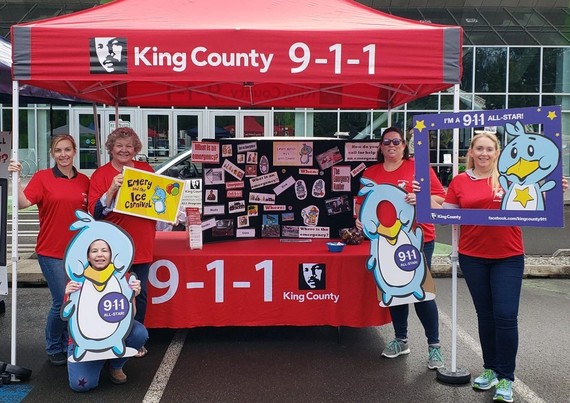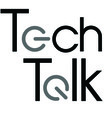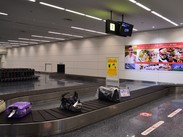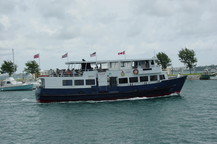
Program Manager Update
Hello and welcome to summer,
I just returned from the NENA national conference and was struck by how NG-911 is coming into clear vision. We see real integration between various applications and more data than ever is collected, analyzed and stored. Our traditionally closed 9-1-1 systems need to be open to the big, bad Internet and Artificial Intelligence (A.I.) was the buzzword of the week.
However, coupled with all of this cool technology is the realization our most important asset is still our people. Telecommunicators provide the lifeline between people calling for help on the worst day of their lives with first responders who work tirelessly to make that day better. It was a stark reminder we cannot move blindly forward with technology simply for technology sake. We must consider the impact on our people and work to ensure the technology enhances, rather than detracts from the mission we all carry out.
The pace of change will continue to increase and this change is reflected in our modernization efforts. The first Requests for Proposal responses have been received and are currently being reviewed, with awards expected in late summer. These initial efforts are laying the groundwork for all that will be coming as we move King County forward into the NG-911 world.
|

Financial
The E911 Program Office recently completed financial monitoring for the 2017-2018 biennium from Q1/2019 forecast to 2024. The objective is to gain a shared understanding of the financial health of the 9-1-1 fund.
Much effort has been applied to reducing costs wherever possible by reviewing existing contracts, vendor accounts and creating operational efficiencies. These efforts have yielded a savings of over $500K thus far.
However, there remains a risk to the sustainability of the fund. New technology is expensive but is required to enable the E911 systems to run smoothly and without fail. Operating costs continue to rise while revenue trend is nominally increasing year over year. With the current trend, core operating costs outpace revenues and will continue to worsen if nothing is done.
Plans are in place to deal with this inevitability. Further cost reductions are being examined and multiple revenue options explored. The E911 Program Office and their stakeholders are committed to solve these issues and risks.
|
 Public Education & Outreach
The Public Education and Outreach Strategic Objectives have been adopted. This was a great regional team effort, developing a 5 year rolling plan for Outreach. Everyone is excited about the changes coming to the program.
911 teams participated in several recent community events and there are more to come. “Scout Night at the Fire Department” had over 175 Scouts engaged as they answered How, When, and Why to call 911 in order to receive their Scouting Emergency Badge. The “Teddy Bear Clinic” gave 200 children a teddy bear they could take through “emergencies” along with Emery coloring books and supplies to teach them about 911.
There is great participation from the PSAPs at these events. Without their help the Program Office would not be able to reach as many community members as they do. Thank you to everyone who is supporting this important effort.

The Growth of Technology &
How to understand it
|
 |
|
1968: 9-1-1 service was introduced but man had not yet walked on the moon. Music was played on records and 8-track tapes. Most phones were rotary dialed and the internet was only a concept. A phone call used a circuit from beginning to end. Imagine taking a Taxi to the airport for a family vacation. The Taxi picks you up and you remain in it until you arrive at the airport. Voice transmission was changed little from Alexander Graham Bell. |
1980: The digital age matures, new telephones had push buttons and could hang on the wall. Music started transitioning to CDs and telephone communications became more like modern air travel. You, your family and many other people arrive at the airport, all heading to the Caribbean. Everyone boards the same plane and when they land, each goes their own way to their final destination. This is similar with how sounds were chopped up, mixed with other chopped up sounds, put on a shared path and then decoded at the other end. |
|
|

2000: The challenge of E-911 in the digital environment was how to include the caller’s phone number and location with the call. The answer became twofold. First, use the current telephone network to pass the phone number (Automatic Number Identification-ANI). Second, implement infrastructure outside the telephone network to store and retrieve location (Automatic Location Identification-ALI) records. You carry a small personal item with you on the plane, and check the rest of your luggage. When you arrive at your destination you must retrieve your checked luggage.
|
2019: Today’s NG911 environment is not an evolution of previous technology, but rather an entirely new system. Just like you can’t play a CD in an MP3 player, telephony systems do not play on Internet Protocol (IP). In the IP world, instead of a dedicated resource like 1968, sounds and data pieces are broken into packets, each of which has the same destination. The packets take different network routes to get around any traffic congestion and there’s extra room for all kinds of additional data to ride along.

A problem is there may still be some old infrastructure along the way causing delays or limiting information delivery. Due to the airport size of your island paradise, you are required to transfer to a smaller plane to get to your final destination. When you arrive at your transfer point, you find the second plane is not able to carry all your luggage so it has to go by ferry. This causes delays and frustration. This is the same when having to change technologies mid-stream, the benefit of the new technology is lost and there can be delays in delivering the necessary data. Until all of the systems are upgraded, the whole system is not yet capable of reaching its full functional and efficient potential.
|

Just like the internet has led to revolutions in retail, travel and many other aspects of daily life, NG911 is the foundation that will allow the features of tomorrow to be delivered. Once the NG911 infrastructure implementation is complete, the benefits and possibilities can be realized. Now time to enjoy your vacation.
|

Legislation and 9-1-1
The 105-day Washington State Legislative session ended April 28th and there were several items of interest for 9-1-1:
ESSB 5272 passed allowing a local sales and use tax for public communications, not to exceed 2/10’s of 1 percent. The previous law was “equal to 1/10 of 1 percent”. This new legislation not only increases the tax, it allows more flexibility to determine the actual amount needed.
HB 1258 (2018) - The Travis Alert Act assesses the resources necessary to improve the E-911 program so information pertaining to an individual’s disability or special need can be available to first responders before they arrive on scene of an emergency.
HB 2143 (2019) provided funding to support HB 1258 (2018), directing the Military Department to contract with a vendor to include, as part of the E-911 emergency alert system, the ability to immediately display that a person with a disability may be present at the scene of an emergency. Due to time constraints in 2019, this bill will be worked in the 2020 session.
ESHB 1109 budget requires $100k of the E911 account to develop a collaborative group with representatives from counties, PSAPs and first responder organizations to submit a report on the 911 system by 10/1/2020. The report must include:
Actual cost per fiscal year to operate and maintain the 911 system including, but not limited to, the ESInet, call handling equipment, personnel costs, facility costs, contractual costs, administrative costs, legal fees;
The difference between the actual state and local costs and current state and local 911 funding;
Potential cost-savings and efficiencies through the consolidation of equipment, regionalization of services or merging of facilities, positive and negative impacts on the public, legal or contractual restrictions, and appropriate actions to alleviate these constraints.
|
Project Updates
|
The new statewide Emergency Services IP Network (ESInet II) installations are complete throughout King County and the State. This new ESInet is the second built in Washington and the first transition in the Country from one IP network to another. This new IP network will allow for much greater 9-1-1 information flow (NG-911) more flexible emergency call routing.
|
|
The current 9-1-1 call handling system upgrade will be completed in Q4/2019. This will conclude a 2 year upgrade process and brings all 12 PSAPs telephone systems current with vendor specifications.
|
|
The map modernization RFP’s have been received and are currently in review, with award expected in late Q3/2019. With the new mapping system comes an enhanced network connecting all of the PSAPs in King County, allowing for a fully automated map update process, saving considerable person hours a year.
|
|
The RFP for an E-911 Single Platform Consultant is also closed and under review with award expected in Q3/2019. The E-911 consultant will be responsible for meeting with all of the King County PSAPs and developing the requirements for the E-911 Strategic Plan technology platform.
|
|
The call reporting modernization initiative is underway; currently undergoing the KCIT Gate process (project review and approval). The system is expected to be fully implemented by the end of 2019.
|
King County E-911 Website Additions
- Agendas and minutes of the Regional Advisory Governing Board (RAGB) meetings
- Alternate Emergency Numbers for 911 centers in the event you can’t reach 9-1-1
- The King County 9-1-1 Public Education and Outreach Strategic Objectives
Kingcounty.gov/911
King County E-911 Mission Statement
The regional E-911 system provides an emergency communications link between the people of King County and appropriate public safety responders.
|